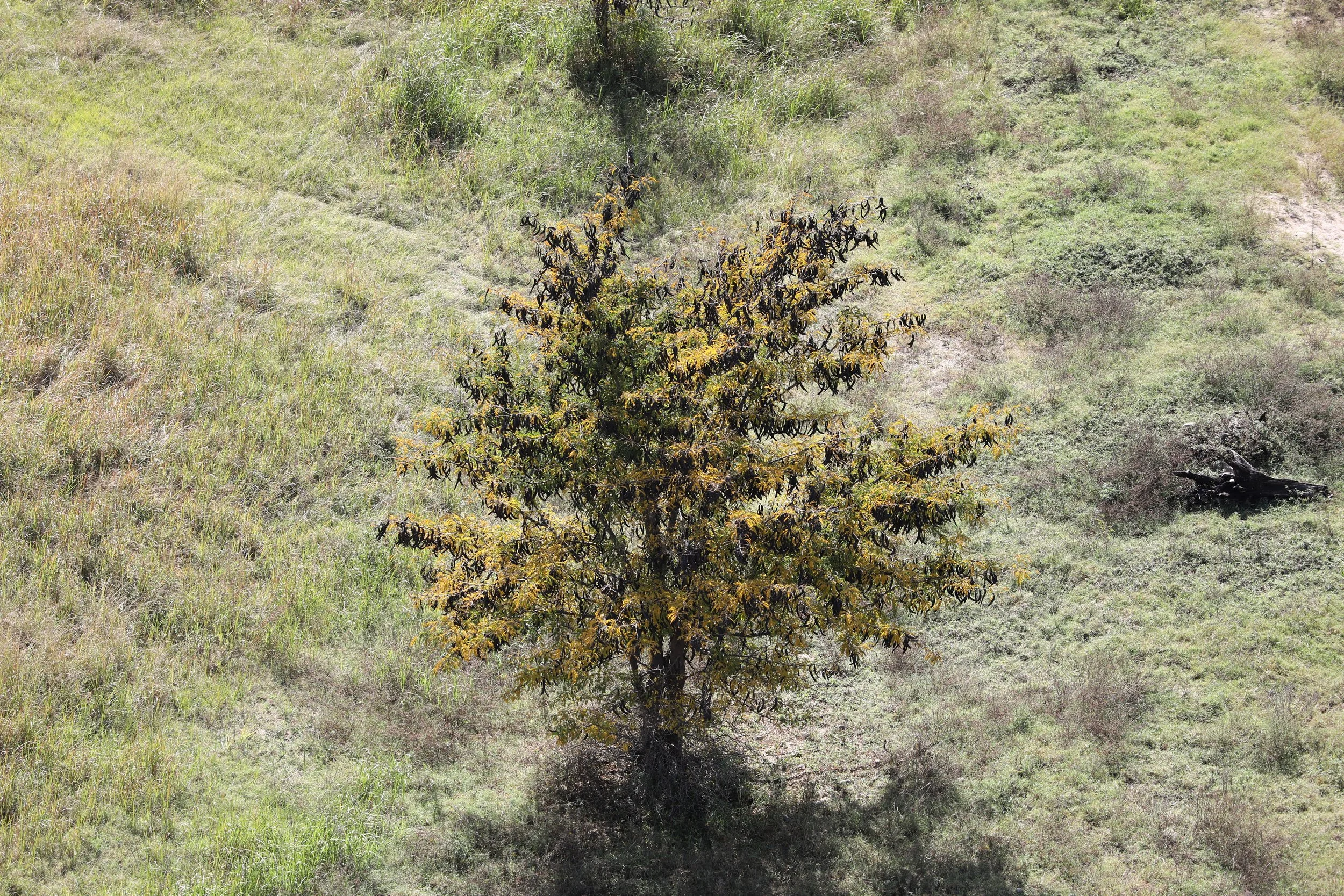Invasive Honey Locust weeds targeted at Wytaliba and Newton Boyd
Honey Locust tree sighted during survey May 21, 2022
The Glen Innes Natural Resources Advisory Committee (GLENRAC Inc) has been undertaking works to monitor and control invasive Honey Locust (Gleditsia triacanthos) weeds in Wytaliba and Newton Boyd.
Areas of both National Park and private land at Wytaliba and Newton Boyd were significantly impacted by intense wildfires during 2019. Native vegetation and habitat in these areas were severely damaged by the bushfires and became vulnerable to invasive weeds such as Honey Locust – a thorny, woody weed that poses a serious threat to catchment areas and riparian communities.
GLENRAC’s project aimed to protect priority species and their ecosystems in Wytaliba and Newton Boyd by reducing the threat of Honey Locust. With the assistance of NSW National Parks, helicopters and drones were utilised in May 2021 to complete aerial surveys of the area. The information collected was then mapped, and a local contractor was engaged to basal bark the invasive tree species in December 2022.
The area targeted in this project is regionally significant as there exists the highest level of floristic diversity between survey sites of any National Parks reserve surveyed in the Northern Tablelands Region. A number of priority species can be found, including flora Tylophora woollsii, Grevillea scortechnii var. sarmentosa, Acacia cangaiensis, Eucalyptus olida, and fauna Peppered Frog, Glossy Black Cockatoo, Spotted Tail Quoll, Brush-tailed Rock Wallaby and Yellow-bellied Glider.
The Mann River flows through the project area and is a known habitat for the endangered Freshwater Eastern Cod.
This project is supported by the Northern Tablelands Local Land Services, through funding from the Australian Government’s National Landcare Program.
Contact emma.tilley@glenrac.org.au or call 02 6732 3443 for more information.
